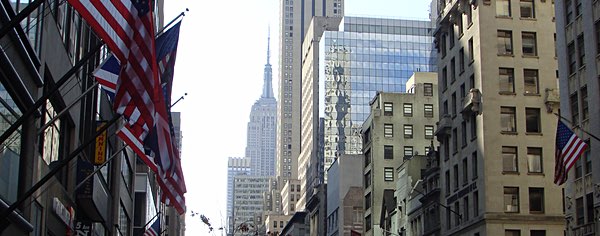- By New York State Comptroller's Office
- Business & Technology
 Print
Print 
Construction noise complaints called into New York City's 311 system have more than doubled in recent years, rising from 14,259 in 2010 to 37,806 in 2015. At the same time, the number of after-hours work permits issued by the city's Department of Buildings (DOB) increased, according to an auditreleased today by State Comptroller Thomas P. DiNapoli.
"Construction is reshaping the city's skyline but the accompanying noise of construction activities is not always welcome by New Yorkers," DiNapoli said. "The city Department of Buildings has allowed noisy work to take place on thousands of projects well before and after normal construction hours. Communication between the city's Building Department and Department of Environmental Protection must improve and the after-hours permitting process needs to be revised to muffle persistent noise problems across the five boroughs."
According to data in from the city's 311 system, created to provide the public with access to city government services and information, from Jan. 1, 2010 through Dec. 31, 2015, there were 141,125 complaints made about construction noise, the majority of which were about after-hours activity. According to the city's noise code, allowable construction hours are weekdays between 7 a.m. and 6 p.m. Construction activities outside those hours are in violation of the code, unless DOB issues a permit to allow such construction. These permits are referred to as after-hours variances (AHVs).
The city's Department of Environmental Protection (DEP) and DOB are the agencies primarily responsible for handling construction noise complaints. DEP is responsible for responding to 311 construction noise complaints. DOB reviews and approves building plans; conducts building inspections; and issues permits, including those for after-hours work. Auditors found there was minimal communication between DEP and DOB regarding noise complaints, and there was no formal process for sharing information about problematic construction sites, particularly those with a high number of noise complaints.
During the audit period of Jan. 1, 2014 and June 30, 2016, there were 90,861 construction-related noise complaints filed with the 311 system; 67,282, or 74 percent, of the complaints were for construction noise before or after permitted hours. Such complaints are assigned to one of DEP's eight senior inspectors to investigate.
Auditors selected a sample of noise complaints for 50 incident addresses (see Exhibit A in the audit for addresses), including the 30 locations with the highest number of construction noise complaints in the city (29 of these locations were in Manhattan) and an additional five locations with the most complaints in the Bronx, Brooklyn, Queens and Staten Island.
DiNapoli's auditors found that 2,044 of the 2,683 construction noise complaints for the sampled locations were for construction before- or after-hours. During this same time frame, DOB issued 2,632 AHVs for these locations.
After a review of recent noise complaints for each of the 50 locations, auditors found that inspectors determined that there was "no excessive noise," for 211 of the 250 complaints and only three complaints resulted in violations being issued by DEP. However, inspectors did not visit the locations until an average of five days after the noise was reported. There were also no reports of meter readings performed at the sites to determine if noise levels were excessive.
When making decisions to grant after hours work variances, DOB officials did not consider construction noise complaints made to 311, nor did they consider construction noise citations issued by DEP. As such, DOB is allowing contractors to obtain continuing extensions of existing AHVs or multiple AHVs for the same construction sites without critical review, which is a significant factor in the rise of complaints.
For example, an AHV was issued for 100 East End Avenue in August 2015, and DOB subsequently approved 24 consecutive electronic renewals that lasted through July 2016, even though the work site was within 200 feet of a residence and there were 112 noise complaints about this project due to after-hours construction.
DiNapoli recommended DEP:
- Improve communication and coordination with DOB so pertinent AHV and permit data is readily available to DEP inspectors;
- Formally analyze 311 system data to identify locations where multiple construction noise complaints are received. Share analyses and recommendations with DOB so it can use this information when deciding whether to grant AHV renewals;
- Establish a formal process to share information with DOB;
- Shorten response times for visiting construction sites with noise complaints;
- Include noise meter readings in inspection reports to provide an objective assessment of noise levels; and
- Revise existing complaint disposition codes to indicate that a location has an AHV, when that is the basis for not issuing a violation.
- Formally assess and update processes for issuing and renewing AHVs, taking into account all pertinent information, including the number and nature of noise complaints and their impact on the community;
- Increase the level of review of AHV renewals to ensure they are appropriately vetted prior to approval; and
- Improve communication with DEP regarding locations with an excessive number of noise complaints.
v13i34




